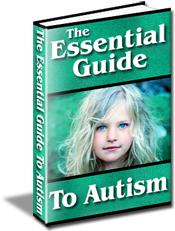What Are The Different Autism Types in Children
Click Here To Know The Simple Methods To Effectively Spot The 31 Signs of Autism
As more and more is understood about autism, it would seem there are more and more autism types. Though the term autism is a blanket term, there are different degrees. No two children with this condition will be exactly the same, but there can be similarities. Some children are very high functioning, and they have very few problems, and there are others who seem almost unreachable. These different autism types do have different names, and there are more and more things being learned about each of them.
Asperger?s Disorder
Asperger?s is a relatively new diagnosis, and you might hear this term many times when you hear about autism. People with this type of autism are usually socially awkward and do not mix well with others. They tend to have an obsessive interest in patterns of all types. However, they do have good language skills and have great adaptation skills. They are, however, often impaired somewhat when it comes to motor skills. This is often misdiagnosed as other things like Attention Deficit Disorder or Obsessive-Compulsive Disorder. It is also thought that those with Asperger?s have a sort of genius. They normally have a talent that they spend much of their time on. Some suggest that Albert Einstein may have had Asperger?s.
Kanner?s Syndrome (classic autistic disorder)
This was named for Dr. Kanner, who first put a name to this disorder in the 1930s and 40s. This is probably the most well known type of autism, and the one many think of when they hear the term. These children seem to have extremely limited emotional outreach or connections with others. They thrive on exact routines, and have learning disabilities. They are often fascinated with objects and movements. Kanner?s Syndrome is often the lowest functioning end of the disorder, and these children (and adults) tend to be very drawn into themselves and have extremely limited communication skills. They often get agitated if the do not eat the same foods and watch the same things on television day in and day out.
Pervasive Developmental Disorder--Not Otherwise Specified (PDD-NOS).
The differences between this type of autism and classic autism are very slight indeed. Children diagnosed as having PDD-NOS tend to display the same characteristics with only really doctors and researchers able to distinguish the differences. The type of care and interventions required will be similar.
Rett?s Syndrome
Rett?s is fairly uncommon, and seems to be diagnosed exclusively in girls. It was named for Dr Rett of Australia. These girls often have severe muscular problems, and are prone to autistic behaviors. They may make and do obsessive things with their hands on a constant basis. Those with Rett?s will be very low functioning and will probably need life long care, as they are usually mentally retarded. Though this condition has been known since the 60s, a gene thought to be responsible was found in the late 90s.
Childhood Disintegrative Disorder
This happens to children who appear to be healthy at birth. Somewhere between the ages of two and four they suddenly regress. They may not potty train, and they lose the ability to socialize with other children. All speech development may stop, or even regress. They may also lose interest in playing and have problems with motor skills that they once had mastered.
These are a few of the more common autism types, but there are others out there. Each comes with its own unique set of challenges, and each child is different. These traits will go on into adulthood, and many will require lifelong care, and even though they may show a strong sense of independence, the mundane things we can all do for ourselves seem to be lost in the shuffle of repetition and routine.
By Rachel Evans. Sign up for a free newsletter for more information on autistic.In the newsletter you'll find out more about the signs and symptoms of autism.
Labels: autism_statistics, autism_support, autism_view, autism_world, autism_zyprexa

